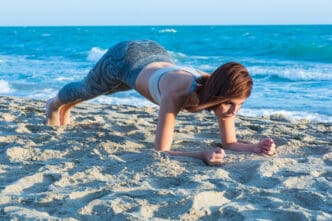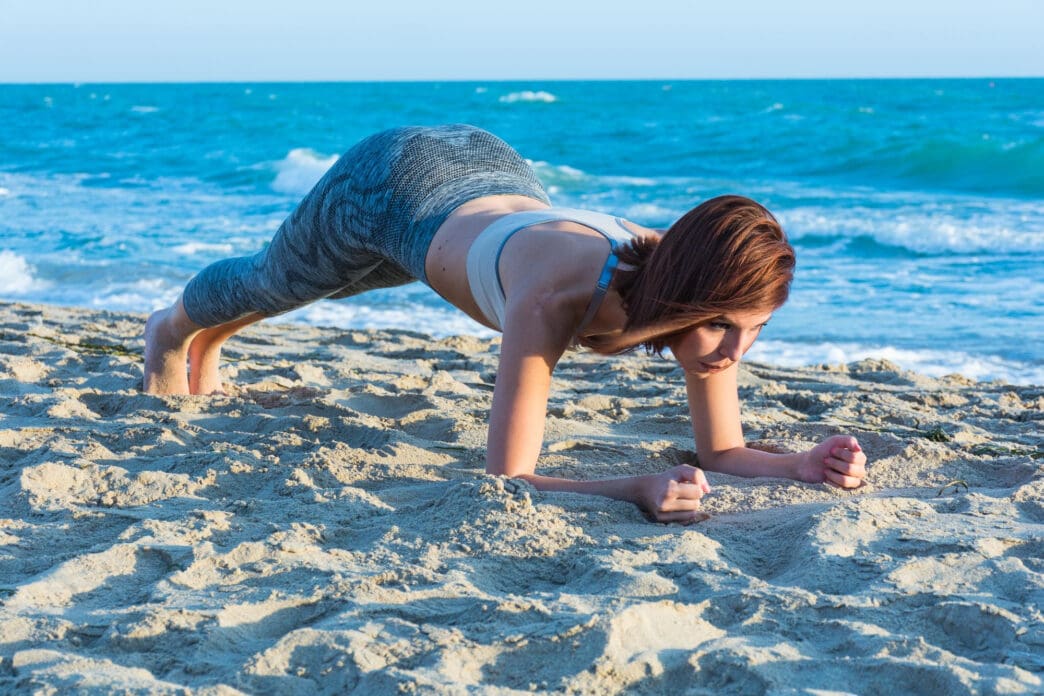A Quick Takeaway
The Story Behind the Trend
How to Make It Work for You
The Community View
For Miami runners looking to elevate their performance, prevent injuries, and achieve new personal bests, cultivating robust core stability is not merely an option but a fundamental necessity. A strong, stable core acts as the central powerhouse, efficiently transferring energy between the upper and lower body, maintaining optimal running posture, and providing the crucial balance needed to navigate every stride with precision and power. Incorporating targeted core stability exercises into a regular training regimen is the single most effective way for runners to unlock their full potential, ensuring longevity and efficiency on the road or trail, especially when battling the unique environmental demands of South Florida.
Why Core Stability Matters for Runners
The core is far more than just the visible abdominal muscles; it’s a complex network comprising the rectus abdominis, obliques, transversus abdominis, erector spinae, pelvic floor, and diaphragm. Together, these muscles form a dynamic cylinder that stabilizes the spine and pelvis, serving as the anatomical bridge between your powerful legs and your driving arms. For runners, this means that a stable core is directly responsible for preventing excessive rotational movement, improving power transfer from the hips to the legs, and maintaining an upright, efficient running form even as fatigue sets in.
Without adequate core stability, runners often experience a “leaky” energy transfer, where power generated by the legs is lost through an unstable torso. This not only diminishes speed and endurance but also increases the risk of common running injuries such as IT band syndrome, runner’s knee, shin splints, and lower back pain. A strong core provides a solid foundation, allowing the limbs to move freely and powerfully without compromising spinal integrity.
Understanding Core Stability vs. Core Strength
While often used interchangeably, there’s a critical distinction between core strength and core stability, especially for runners. Core strength refers to the ability of the core muscles to generate force, such as in a sit-up or a heavy lift. Core stability, on the other hand, is the ability of these muscles to resist unwanted movement and maintain a neutral spine and pelvis under dynamic conditions.
For runners, stability is often the more critical factor. It’s about control, endurance, and the capacity to keep the trunk rigid and still while the limbs are in motion. While strength contributes to stability, focusing solely on brute strength without addressing the nuanced control required for stability can be counterproductive. The exercises outlined below prioritize this crucial aspect of control and anti-movement.
Key Core Stability Exercises for Runners
These exercises are selected for their effectiveness in building foundational core stability, targeting the deep stabilizing muscles essential for efficient running. Focus on slow, controlled movements and maintaining proper form over speed or repetitions.
Plank Variations
Planks are foundational for building isometric core strength and stability, teaching the body to resist gravity and maintain a rigid torso. They engage a wide range of core muscles, including the transversus abdominis, obliques, and erector spinae.
Standard Plank
Start in a push-up position, then lower onto your forearms, keeping your body in a straight line from head to heels. Engage your glutes and brace your core, imagining pulling your belly button towards your spine. Hold this position, focusing on preventing your hips from sagging or rising too high.
Side Plank
Lie on your side, propped up on one forearm with your elbow directly under your shoulder. Stack your feet or place one in front of the other. Lift your hips off the ground, forming a straight line from your head to your ankles. This variation intensely targets the obliques and quadratus lumborum, crucial for resisting lateral flexion during running.
Plank with Hip Dips
From a standard plank position, slowly dip one hip towards the floor, then return to center and dip the other hip. This adds a dynamic element, challenging the obliques and demanding greater control to prevent excessive rotational movement.
Plank with Leg Lift
While holding a standard plank, slowly lift one leg a few inches off the ground, maintaining a perfectly stable torso. Hold briefly, then lower and switch legs. This variation increases the demand on the core to prevent rotation and maintain balance with a reduced base of support.
Anti-Rotation Exercises
These exercises specifically train the core to resist rotational forces, a common challenge in running where the torso can twist excessively if not properly stabilized. Preventing this unwanted movement improves power transfer and reduces strain on the spine.
Pallof Press
Using a resistance band anchored to a sturdy object at chest height, stand perpendicular to the anchor point, holding the band with both hands directly in front of your chest. Slowly press the band straight out, resisting the pull from the side trying to rotate your torso. Return slowly to the starting position, maintaining a stable, square stance throughout the movement.
Bird Dog
Start on all fours, hands directly under your shoulders and knees under your hips. Simultaneously extend your right arm forward and your left leg straight back, keeping your back flat and hips level. Focus on preventing any rotation or arching of the spine. Return to the starting position with control and switch sides. This exercise is excellent for improving coordination and spinal stability.
Anti-Extension Exercises
Anti-extension exercises challenge the core to resist hyperextension of the lumbar spine, which can occur during running, especially when fatigued. These movements strengthen the anterior core muscles that prevent the lower back from arching excessively.
Dead Bug
Lie on your back with your knees bent at 90 degrees directly over your hips and arms extended straight up towards the ceiling. Slowly lower your right arm towards the floor behind your head and your left leg towards the floor simultaneously, keeping your lower back pressed firmly into the ground. Return to the starting position and switch sides. The key is to maintain constant contact between your lower back and the floor.
Hollow Body Hold
Lie on your back with your arms extended overhead and legs straight. Engage your core to press your lower back into the ground. Lift your head, shoulders, and legs slightly off the floor, forming a gentle “rocking boat” shape. The lower you can hold your legs and arms without your lower back arching, the more challenging it is. This is a highly effective exercise for global core engagement.
Glute and Hip Stability
Often considered an extension of the core for runners, strong glutes and stable hips are paramount for efficient stride mechanics and injury prevention. They work synergistically with the trunk muscles to control pelvic tilt and leg drive.
Single-Leg Glute Bridge
Lie on your back with knees bent and feet flat on the floor, hip-width apart. Extend one leg straight out. Drive through the heel of the planted foot, lifting your hips off the ground until your body forms a straight line from your shoulders to your knee. Squeeze your glutes at the top and maintain a level pelvis. Lower with control and repeat before switching legs.
Clamshells
Lie on your side with your knees bent at a 90-degree angle and stacked. Keep your feet together and your hips stacked. Engage your glutes to slowly lift your top knee towards the ceiling, like a clamshell opening, without letting your hips roll back. Control the movement as you lower your knee. This targets the hip abductors and external rotators, vital for knee stability.
Integrating Core Work into Your Training Schedule
For optimal benefits, Miami runners should aim to incorporate core stability exercises into their routine 2-3 times per week. This can be done after a run, on cross-training days, or as a dedicated mini-session. Start with 2-3 sets of 30-60 second holds for planks, or 10-15 repetitions per side for dynamic exercises. As your stability improves, you can increase the duration, reps, or introduce more challenging variations.
Consistency is paramount. Just as you wouldn’t expect to improve your running without regular mileage, consistent core work is essential for building and maintaining the foundational stability required for peak performance. Listen to your body, prioritize proper form over quantity, and gradually progress the difficulty of the exercises.
The Miami Runner’s Edge
Running in Miami presents unique challenges, from the persistent heat and humidity to varied urban and coastal terrains. These conditions demand more from a runner’s body, particularly in maintaining form and efficiency when fatigue sets in. A strong, stable core becomes an even greater asset here, allowing runners to maintain their posture, conserve energy, and execute powerful strides even when battling the elements. By consciously building core stability, Miami runners can not only prevent injuries but also gain a significant competitive advantage, ensuring they can perform at their best regardless of the conditions.
Embracing a dedicated core stability regimen is a game-changer for any runner, but particularly for those navigating the vibrant, demanding landscape of Miami. These exercises provide the crucial foundation for enhanced performance, reduced injury risk, and a more efficient, powerful stride. Make core stability a non-negotiable part of your training, and you’ll unlock a new level of running prowess, allowing you to conquer every mile with confidence and strength.







